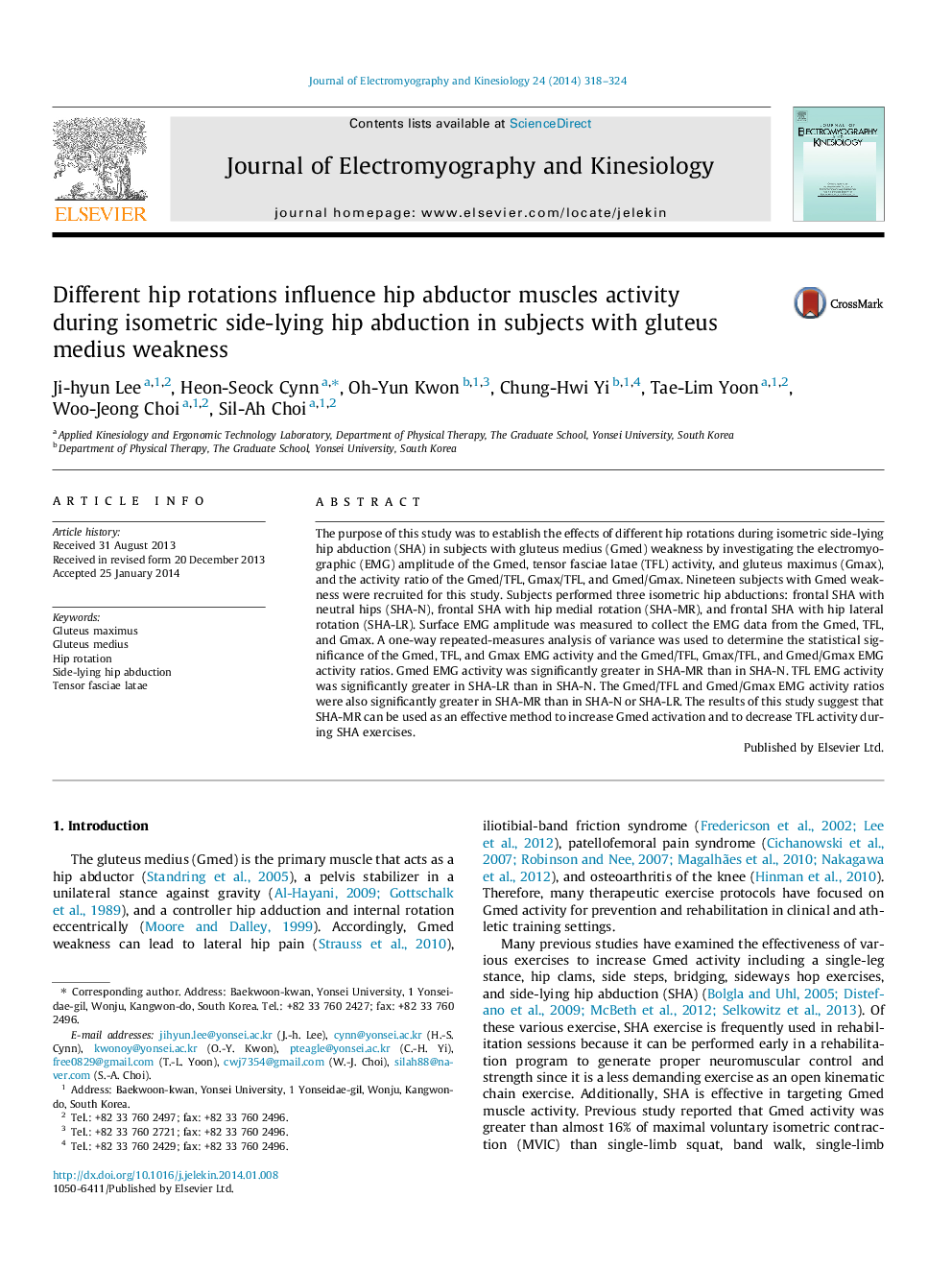| کد مقاله | کد نشریه | سال انتشار | مقاله انگلیسی | نسخه تمام متن |
|---|---|---|---|---|
| 4064671 | 1266221 | 2014 | 7 صفحه PDF | دانلود رایگان |
The purpose of this study was to establish the effects of different hip rotations during isometric side-lying hip abduction (SHA) in subjects with gluteus medius (Gmed) weakness by investigating the electromyographic (EMG) amplitude of the Gmed, tensor fasciae latae (TFL) activity, and gluteus maximus (Gmax), and the activity ratio of the Gmed/TFL, Gmax/TFL, and Gmed/Gmax. Nineteen subjects with Gmed weakness were recruited for this study. Subjects performed three isometric hip abductions: frontal SHA with neutral hips (SHA-N), frontal SHA with hip medial rotation (SHA-MR), and frontal SHA with hip lateral rotation (SHA-LR). Surface EMG amplitude was measured to collect the EMG data from the Gmed, TFL, and Gmax. A one-way repeated-measures analysis of variance was used to determine the statistical significance of the Gmed, TFL, and Gmax EMG activity and the Gmed/TFL, Gmax/TFL, and Gmed/Gmax EMG activity ratios. Gmed EMG activity was significantly greater in SHA-MR than in SHA-N. TFL EMG activity was significantly greater in SHA-LR than in SHA-N. The Gmed/TFL and Gmed/Gmax EMG activity ratios were also significantly greater in SHA-MR than in SHA-N or SHA-LR. The results of this study suggest that SHA-MR can be used as an effective method to increase Gmed activation and to decrease TFL activity during SHA exercises.
Journal: Journal of Electromyography and Kinesiology - Volume 24, Issue 2, April 2014, Pages 318–324
